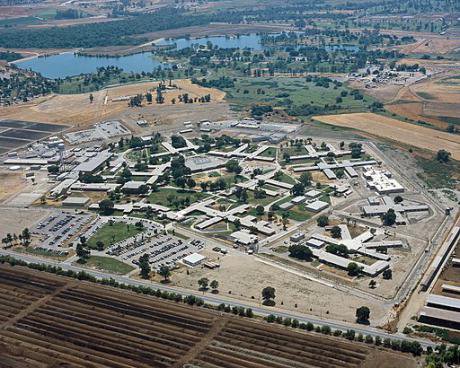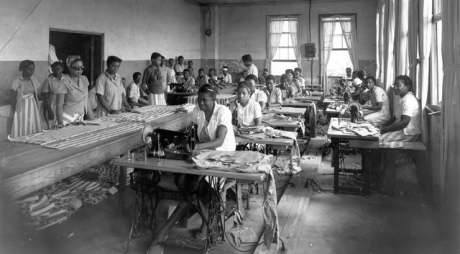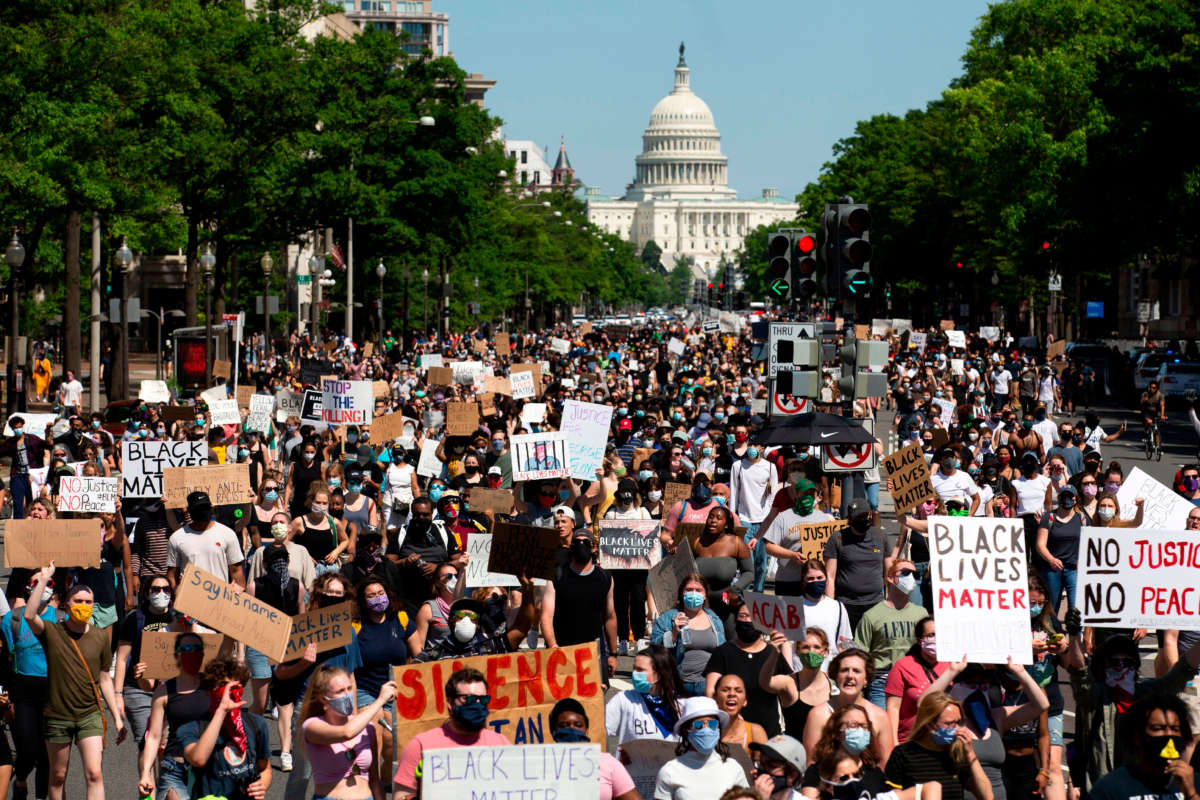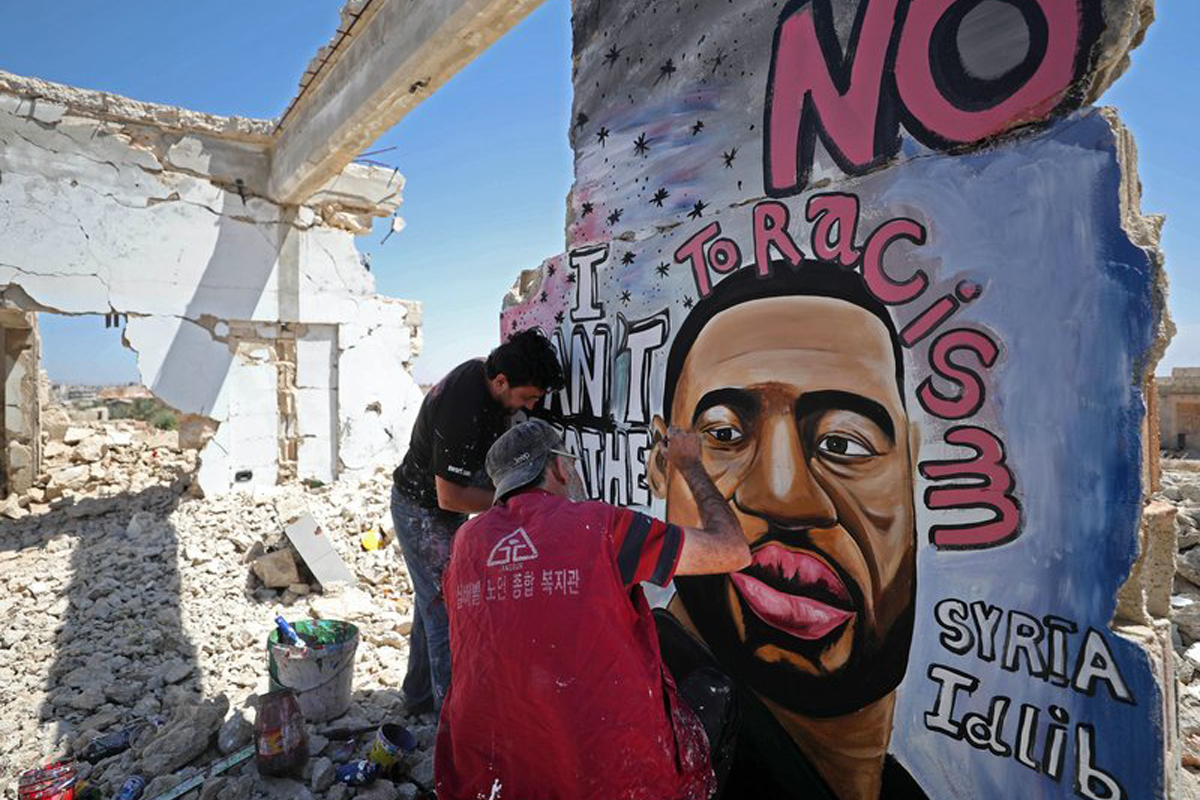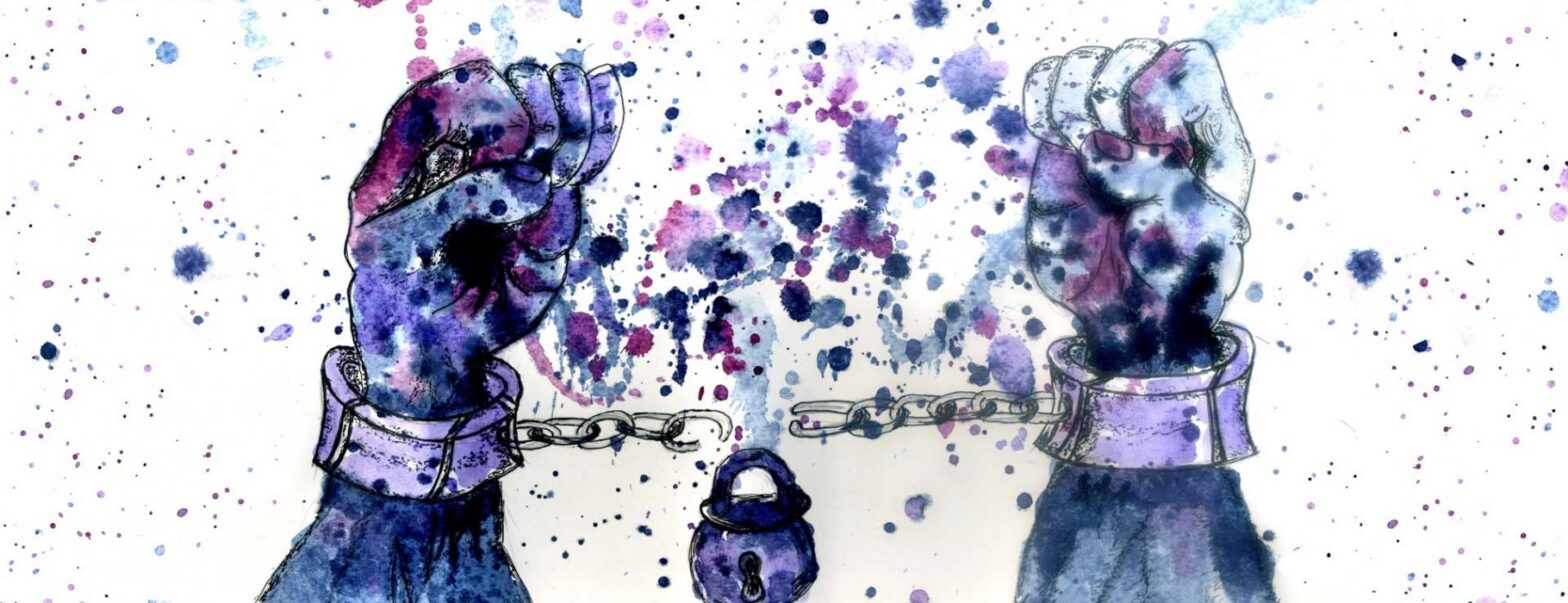Originally published in OpenDemocracy
Authoritarian capitalism and the prison industrial complex is a two-tiered tyrannical system designed to enslave through mass incarceration.

Children with incarcerated parents are 6-9 times more likely to become incarcerated themselves. Black children are seven-and-a-half times more likely than White children to have a parent in prison, and Latino children are two-and-a-half times more likely to experience this family dynamic.
In 2000, in Masked Racism: Reflections on the Prison Industrial Complex, Angela Yvonne Davis examined the infamy of the Prison Industrial Complex (PIC), a term first coined, maybe by Angela Davis herself, in the late 1990’s. What is the PIC? It is a term used to describe the overlapping interests of government and industry that use surveillance, policing and imprisonment as solutions to economic, social and political problems. Davis stated:
“Prison privatization is the most obvious instance of capital’s current movement toward the prison industry. While government-run prisons are often in gross violation of international human rights standards, private prisons are even less accountable. In March 1998, the Corrections Corporation of America (CCA), the largest US private prison company, claimed 54,944 beds in 68 facilities under contract or development in the US, Puerto Rico, the United Kingdom, and Australia. Following the global trend of subjecting more women to public punishment, CCA opened a women’s prison outside Melbourne.
Private prison companies are only the most visible component of the increasing corporatization of punishment. Many corporations whose products we consume on a daily basis have learned that prison labor can be as profitable as third world labor power exploited by US-based global corporations. Both relegate formerly unionized workers to joblessness and many even wind up in prison. Some of the companies that use prison labor are IBM, Motorola, Compaq, Texas Instruments, Honeywell, Microsoft, and Boeing. But it is not only the hi-tech industries that reap the profits of prison labor.
The California Prison Industry Authority (CALPIA) uses inmate labor to build, grow, and manufacture products for state agencies, institutions and schools. Products such as furniture, food products & agriculture, clothing, bedding, shoes & boots, and more. The 2016 revenue earned by PIA was approximately 225M, while inmates work pay ranges from .32-$1 per hour.
- PIA Mission Statement: CALPIA is a self-supporting, customer-focused business that reduces recidivism, increases prison safety, and enhances public safety by providing offenders productive work and training opportunities.
- Vision Statement: Changing offenders’ lives through innovative job training for a safer California.
While these messages may be the mission and vision of CalPIA, the training provided seldom if ever leads to work post-release. Unemployment and underemployment are the biggest barriers to successful reentry.”
Davis continued:
“Nordstrom department stores sell jeans that are marketed as “Prison Blues”, as well as t-shirts and jackets made in Oregon prisons. The advertising slogan for these clothes is “made on the inside to be worn on the outside”. Maryland prisoners inspect glass bottles and jars used by Revlon and Pierre Cardin, and schools throughout the world buy graduation caps and gowns made by South Carolina prisoners. “For private business”, write Eve Goldberg and Linda Evans (a political prisoner inside the Federal Correctional Institution at Dublin, California) “prison labor is like a pot of gold. No strikes. No union organizing. No health benefits, unemployment insurance, or workers’ compensation to pay. No language barriers, as in foreign countries. Prisoners do data entry for Chevron, make telephone reservations for airlines, raise hogs, shovel manure, make circuit boards, limousines, waterbeds, and lingerie for Victoria’s Secret all at a fraction of the cost of `free labor'”.
As a youth, I was arrested and convicted of a crime and sentenced to life in prison. I served 23 years at the California Institution for women in Corona, CA. When I was first incarcerated in 1988, the women’s prison in Corona was the largest women’s prison in the world. Since the 1980s prison expansion in California CIW has become second to the California Central Women’s Facility in Chowchilla which opened in 1991. We often saw tours given to visitors from other countries who were looking to CIW as a model to emulate. Many countries now look away from the American carceral system as a model, seeing prison expansion and mass incarceration of its citizens as disgraceful and a human rights violation.
CIW was built in 1952 to hold approximately 500 women. When I arrived, there were 2800 female bodied prisoners packed into converted dayrooms, custodial boiler rooms, doubled bunked cells, and the auditorium. From the vast number of women locked up, it was clear that CDC was only interested in human capital as a means of profiteering. The majority of women behind bars were convicted of drug-related and property crimes. Black women made up 47% of the population in 1988 and continued to grow through the late 1990s.
By the time I was released in 2011 Black women made up approximately 37% of the population behind bars a decrease of 10% but still a disproportionate number in relationship to the general population. Thanks to prison abolitionists, criminal justice reformists and policy changes, black women are less impacted today. However, the damage has been done and the cycle of generational poverty and incarceration is still high for black Americans.
To further illustrate these remarks Davis points out:
“To deliver up bodies destined for profitable punishment, the political economy of prisons relies on racialized assumptions of criminality – such as images of black welfare mothers reproducing criminal children – and on racist practices in arrest, conviction, and sentencing patterns. Colored bodies constitute the main human raw material in this vast experiment to disappear the major social problems of our time. Homelessness, unemployment, drug addiction, mental illness, and illiteracy are only a few of the problems that disappear from public view when the human beings contending with them are relegated to cages. Prisons thus perform a feat of magic.
“But prisons do not disappear problems, they disappear human beings. And the practice of disappearing vast numbers of people from poor, immigrant, and racially marginalized communities has literally become a big business. Once the aura of magic is stripped away from the imprisonment solution, what is revealed is racism, class bias, and the parasitic seduction of capitalist profit. The prison industrial system materially and morally impoverishes its inhabitants and devours the social wealth needed to address the very problems that have led to spiraling numbers of prisoners.”
The prison industrial complex is a business!
The impact and intersection of race, mass incarceration, state violence and authoritarian capitalism can be seen and felt in places like Ferguson, Missouri. After the murder of Michael Brown, Jr, an unarmed black teenager in Ferguson, Missouri by Darren Wilson, a white police office, the world witnessed the use of military force and weaponry on US soil against peaceful protesters and on American citizens like never before.
I was living in North County St. Louis when all this happened. I protested, attended rallies, and volunteered with the Ferguson Commission, a body of 16 local leaders. The charge was to address the underlying root cause that led to the unrest in the wake of Michael Brown’s death and to publish a report with transformative policy recommendations for making the region stronger and a better place for everyone to live and to guide the community in charting a new path toward healing and positive change for all residents of the St. Louis region.
We know the 2015 report concluded what most reports have concluded after investigating the cause of unrest in Black communities over the past century (i.e., East St. Louis (1917), Watts (1965), Detroit (1967), and Los Angeles (1992)). Strategies for healing racial wounds, dismantling structural racism, and promoting racial and ethnic equity are needed but never produced.
The continuous mistreatment, torture, terrorism, and murder of Blacks in America as sanctioned by State violence and white supremacy have been normalized by authoritarian capitalism.
Not much has changed in St. Louis since August 9, 2014. On September 15, 2017 another White police officer (ex-police officer) Jason Stockley was acquitted for killing Anthony Lamar Smith (24 yrs. old) after being caught on tape stating: “I’m going to kill the nigger,” despite the investigation concluding that he had planted a firearm in Smith’s car.
Authoritarian capitalism and the prison industrial complex is a two-tiered tyrannical system designed to enslave through mass incarceration. The white imagination that sees black people as less than human, sees poor people as slaves, and profit as justice.
